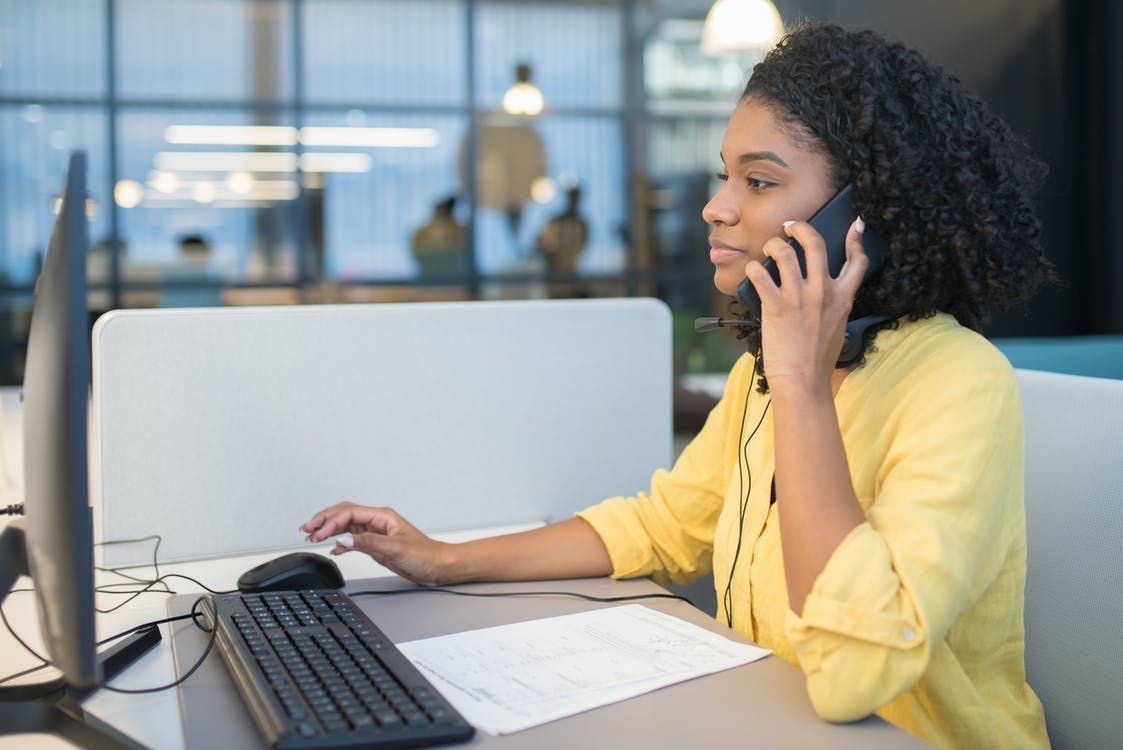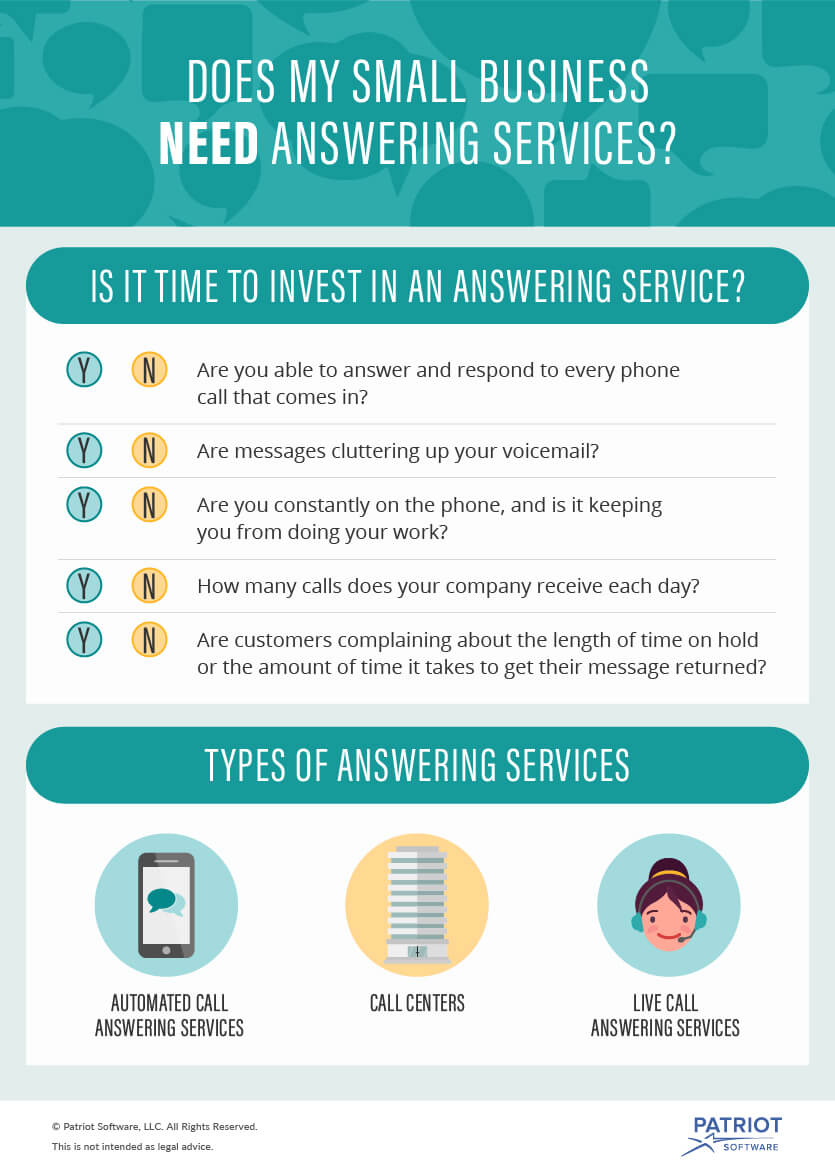All Categories
Featured
Table of Contents
- – What Is The Best What Is An Answering Service? ...
- – Who Is The Best Telephone Answering Services C...
- – Best Business Answering Services - Virtual Rec...
- – What Are The Best How Answering Services Work...
- – What Are The Best Telephone Answering Service...
- – What Are The Highest Rated Business Answerin...
What Is The Best What Is An Answering Service? Deal Right Now
This gadget and its followers were designed by Sava Jacobson, an electrical engineer with a personal consulting business. While early answering machines utilized magnetic tape innovation, a lot of modern devices utilizes strong state memory storage; some gadgets use a mix of both, with a solid-state circuit for the outgoing message and a cassette for the incoming messages.
"toll conserving" below) (virtual answering service). This is useful if the owner is evaluating calls and does not want to speak to all callers. In any case after going, the calling party needs to be notified about the call having actually been addressed (in many cases this begins the charging), either by some remark of the operator, or by some greeting message of the little bit, or dealt with to non-human callers (e.
This holds specifically for the Little bits with digitally kept welcoming messages or for earlier devices (prior to the rise of microcassettes) with an unique endless loop tape, different from a second cassette, dedicated to recording. There have been answer-only devices without any recording capabilities, where the welcoming message had to inform callers of a state of current unattainability, or e (business answering service).
Who Is The Best Telephone Answering Services Company

about accessibility hours. In taping Littles the greeting generally consists of an invite to leave a message "after the beep". A voice mail that utilizes a microcassette to tape messages On a dual-cassette answerphone, there is an outbound cassette, which after the specified variety of rings plays a pre-recorded message to the caller.

Single-cassette voice mail contain the outgoing message at the start of the tape and inbound messages on the remaining area. They initially play the announcement, then fast-forward to the next readily available area for recording, then tape the caller's message. If there are numerous previous messages, fast-forwarding through them can trigger a considerable delay.
This beep is often described in the welcoming message, requesting that the caller leave a message "after the beep". TADs with digital storage for the recorded messages do disappoint this hold-up, of course. A TAD might provide a remote control facility, where the answerphone owner can sound the home number and, by going into a code on the remote telephone's keypad, can listen to recorded messages, or delete them, even when far from home.
Best Business Answering Services - Virtual Receptionists Money Can Buy

Consequently the device increases the variety of rings after which it addresses the call (normally by 2, resulting in 4 rings), if no unread messages are presently kept, however answers after the set number of rings (normally two) if there are unread messages. This permits the owner to find out whether there are messages waiting; if there are none, the owner can hang up the phone on the, e.
Some devices likewise permit themselves to be remotely activated, if they have actually been turned off, by calling and letting the phone ring a specific a great deal of times (usually 10-15). Some service companies abandon calls already after a smaller sized number of rings, making remote activation impossible. In the early days of Little bits a special transmitter for DTMF tones (dual-tone multi-frequency signalling) was regionally needed for push-button control, considering that the formerly employed pulse dialling is not apt to communicate suitable signalling along an active connection, and the dual-tone multi-frequency signalling was executed stepwise.
Any incoming call is not identifiable with respect to these homes in advance of going "off hook" by the terminal equipment. So after going off hook the calls must be switched to suitable devices and just the voice-type is right away accessible to a human, however perhaps, nonetheless should be routed to a LITTLE (e.
What Are The Best How Answering Services Work Brands To Buy
What if I told you that you do not need to actually get your device when addressing a consumer call? Another person will. So practical, best? Responding to phone calls doesn't require somebody to be on the other end of the line. Effective automated phone systems can do the technique simply as efficiently as a live agent and often even better.
An automated answering service or interactive voice action system is a phone system that interacts with callers without a live person on the line - call answering services. When business use this innovation, consumers can get the response to a concern about your organization simply by using interactions set up on a pre-programmed call flow.
Although live operators upgrade the client service experience, lots of calls do not need human interaction. An easy recorded message or guidelines on how a customer can retrieve a piece of information typically solves a caller's immediate need - business answering service. Automated answering services are a basic and efficient way to direct inbound calls to the right person.
What Are The Best Telephone Answering Service Sydney - Virtual Office Sydney
Notification that when you call a business, either for assistance or product questions, the first thing you will hear is a pre-recorded voice welcoming and a series of choices like press 1 for client service, press 2 for queries, and so on. The pre-recorded choices branch out to other options depending on the consumer's choice.
The phone tree system helps direct callers to the right individual or department using the keypad on a cellphone. In some instances, callers can utilize their voices. It deserves noting that auto-attendant choices aren't limited to the ten numbers on a phone's keypad. Once the caller has picked their very first option, you can design a multi-level auto-attendant that uses sub-menus to direct the caller to the right type of help.
The caller does not need to interact with a person if the auto-attendant phone system can handle their issue. The automatic service can path callers to a staff member if they reach a "dead end" and need support from a live representative. It is costly to work with an operator or executive assistant.
What Are The Highest Rated Business Answering Services - Virtual Receptionists?
Automated answering services, on the other hand, are considerably cheaper and supply significant cost savings at an average of $200-$420/month. Even if you don't have devoted staff to manage call routing and management, an automatic answering service enhances performance by allowing your group to concentrate on their strengths so they can more efficiently invest their time on the phone.
A sales lead routed to customer service is a lost shot. If a consumer who has item questions reaches the wrong department or receives insufficient responses from well-meaning workers who are less trained to manage a particular type of concern, it can be a reason for frustration and frustration. An automated answering system can decrease the variety of misrouted calls, therefore helping your employees make much better usage of their phone time while maximizing time in their calendar for other tasks.
With Automated Answering Systems, you can produce an individualized experience for both your staff and your callers. Make a recording of your main welcoming, and just upgrade it frequently to show what is going on in your organization. You can develop as lots of departments or menu options as you want.
Table of Contents
- – What Is The Best What Is An Answering Service? ...
- – Who Is The Best Telephone Answering Services C...
- – Best Business Answering Services - Virtual Rec...
- – What Are The Best How Answering Services Work...
- – What Are The Best Telephone Answering Service...
- – What Are The Highest Rated Business Answerin...
Latest Posts
Eco-Friendly Business Answering Service Near Me – North Adelaide
Dependable 24/7 Answering Service Near Me – SA
Preferred Business Answering Service – Australia
More
Latest Posts
Eco-Friendly Business Answering Service Near Me – North Adelaide
Dependable 24/7 Answering Service Near Me – SA
Preferred Business Answering Service – Australia